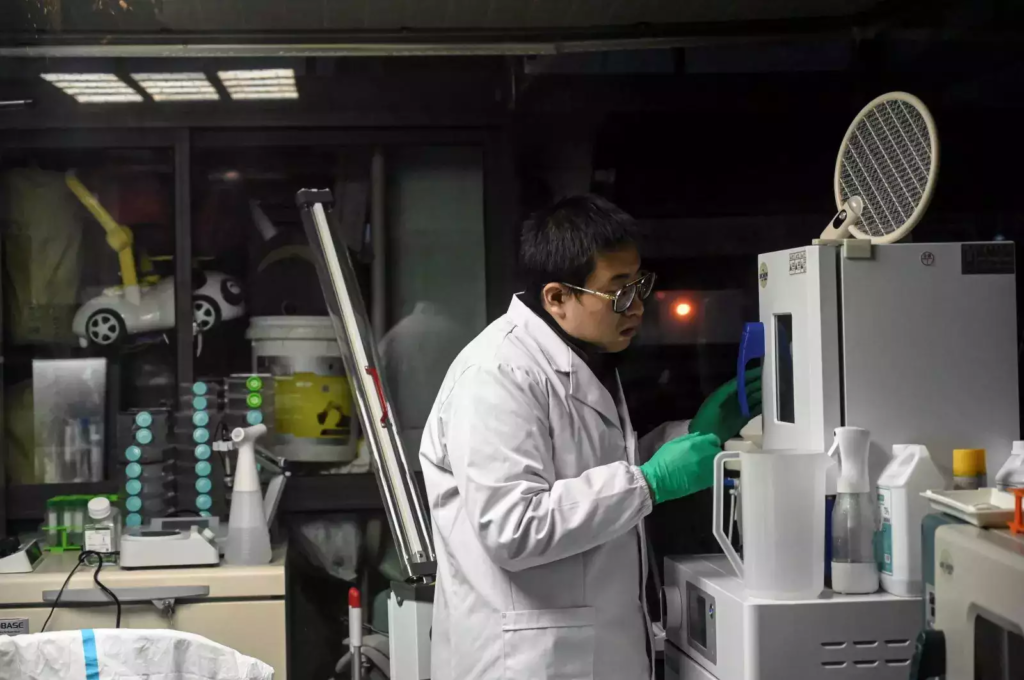Reverse Type 1 Diabetes has always been a distant dream for millions of patients, but recent advancements by Chinese scientists may have finally turned this dream into reality.
In a world-first achievement, researchers from Tianjin First Central Hospital and Peking University have successfully reverse type 1 diabetes in a patient using a stem cell transplant.
This groundbreaking treatment offers hope for those living with the chronic condition, potentially ushering in a new era of diabetes management. Here’s a detailed look at the process, its implications, and the future of stem cell research in diabetes treatment.
The Breakthrough Procedure
The key to this success lies in a procedure that enabled scientists to reverse type 1 diabetes by using chemically induced pluripotent stem-cell-derived islets (CiPSC islets).
Read : Banned Chinese Garlic Can Cause Cancer and Kidney Failure
These islets were created from the patient’s own adipose tissue, eliminating the need for donor organs, which are often scarce. This technique uses a patient’s cells, reducing the risks of immune rejection, a common issue in traditional islet transplants.
By harvesting the patient’s adipose tissue cells, researchers were able to reprogram these into insulin-producing islet cells. These newly created cells were transplanted back into the patient’s body, allowing her to naturally regulate her blood sugar levels without relying on insulin injections.
Read : Why It’s Rare To See Chinese Pregnant Lady ???
This entire procedure to reverse type 1 diabetes was conducted in less than half an hour. Unlike traditional islet transplants, the CiPSC islets were implanted into the patient’s abdominal muscles instead of her liver.

This new location for the transplant allowed for easy monitoring and minimized the risk of complications, such as inflammation. Moreover, the minimally invasive nature of the procedure reduced the recovery time, allowing the patient to heal quicker.
Patient’s Background and Recovery
The patient, a 25-year-old woman from Tianjin, had been battling type 1 diabetes for over 11 years. Her condition had been difficult to manage, with severe fluctuations in her blood sugar levels leading to frequent episodes of hypoglycemia.
Prior to the groundbreaking treatment, she had undergone two liver transplants and one unsuccessful pancreatic islet cell transplant, but these interventions were unable to reverse type 1 diabetes in her case. Despite numerous efforts, her condition remained poorly controlled, causing immense challenges in her day-to-day life.
After receiving the CiPSC islet transplant, the patient’s condition began to stabilize. Within two and a half months post-surgery, she no longer required insulin injections, and her blood sugar levels remained within the target range.
Remarkably, 98% of her blood sugar measurements were within the healthy range after five months, a major milestone after more than a decade of struggles.
This successful procedure to reverse type 1 diabetes marked a significant improvement in her quality of life, demonstrating the potential of stem cell therapies in managing chronic conditions like diabetes.

One year later, the patient’s progress continued to be monitored closely. According to the researchers, all clinical data met the required research endpoints, and no transplant-related abnormalities were observed.
This success has encouraged further clinical studies, with the hope that the CiPSC islet transplant can be replicated in other patients and reverse type 1 diabetes on a broader scale.
Implications for Type 1 Diabetes Treatment
The successful reverse type 1 diabetes in this patient is a remarkable achievement, with vast implications for the future of diabetes treatment. Traditional treatments, such as insulin injections, help manage blood sugar levels but do not cure the condition.
Even with advanced islet transplants, the scarcity of donors and the risks associated with immune rejection have limited the widespread adoption of these procedures. However, this innovative stem cell therapy offers a new approach to potentially reverse type 1 diabetes.
The use of CiPSC islets presents a breakthrough in solving two major challenges: the lack of available islet cells and the risk of immune rejection.
Since the islets are created from the patient’s own cells, there is no need for a donor, and the chances of rejection are significantly reduced. This innovation could make stem cell therapy a more accessible option for people with type 1 diabetes around the world.
Another major advantage of this approach to reverse type 1 diabetes is the simplicity of the procedure. The researchers emphasized that the process of harvesting, reprogramming, and transplanting the cells was quick and minimally invasive.

The new transplant site in the abdominal muscles, as opposed to the liver, allows for better monitoring and reduces potential complications, such as inflammation.
These factors make this technique a promising alternative to traditional treatments and a step closer to making stem cell transplants a routine option for diabetes patients.
The success of this procedure could also impact the development of other treatments for chronic conditions. Stem cell therapies have long been viewed as a promising avenue for curing various diseases, but they have been hindered by technical challenges and the complexities of human biology.
However, the ability to reverse type 1 diabetes in this patient signals that these obstacles may be overcome in the near future.
The Future of Stem Cell Research in Diabetes
Stem cell research has opened new doors in the search for a cure for type 1 diabetes. Although further studies and clinical trials are necessary to confirm the long-term effectiveness of CiPSC islet transplants, the early results are incredibly promising.
The patient in this study has remained insulin-free for over a year, with stable blood sugar levels. These results have sparked optimism within the medical community and could lead to a paradigm shift in how we approach diabetes treatment.
Looking forward, researchers believe that CiPSC islet transplants could become a routine treatment to reverse type 1 diabetes, offering hope to millions of patients around the globe.

The potential to create a renewable source of insulin-producing cells without relying on donors would revolutionize diabetes care. Moreover, the reduced risk of immune rejection would make the treatment safer and more widely available.
The success of this pioneering procedure demonstrates that stem cell therapy is no longer just a theory; it is a practical and effective solution for reversing chronic conditions. As researchers continue to refine and improve these techniques, the goal of finding a lasting cure for type 1 diabetes seems closer than ever.
The ability to reverse type 1 diabetes using stem cell transplants represents a significant breakthrough in medical science. The innovative procedure conducted by Chinese scientists not only offers hope for millions of diabetes patients but also opens the door to new possibilities in treating other chronic conditions.
With further research and clinical trials, CiPSC islet transplants could become a routine and accessible treatment for those living with type 1 diabetes.
This achievement marks a critical step forward in the quest for a cure and brings us closer to a future where diabetes may no longer be a lifelong burden.
let’s enjoy few years on earth with peace and happiness….✍🏼🙏

